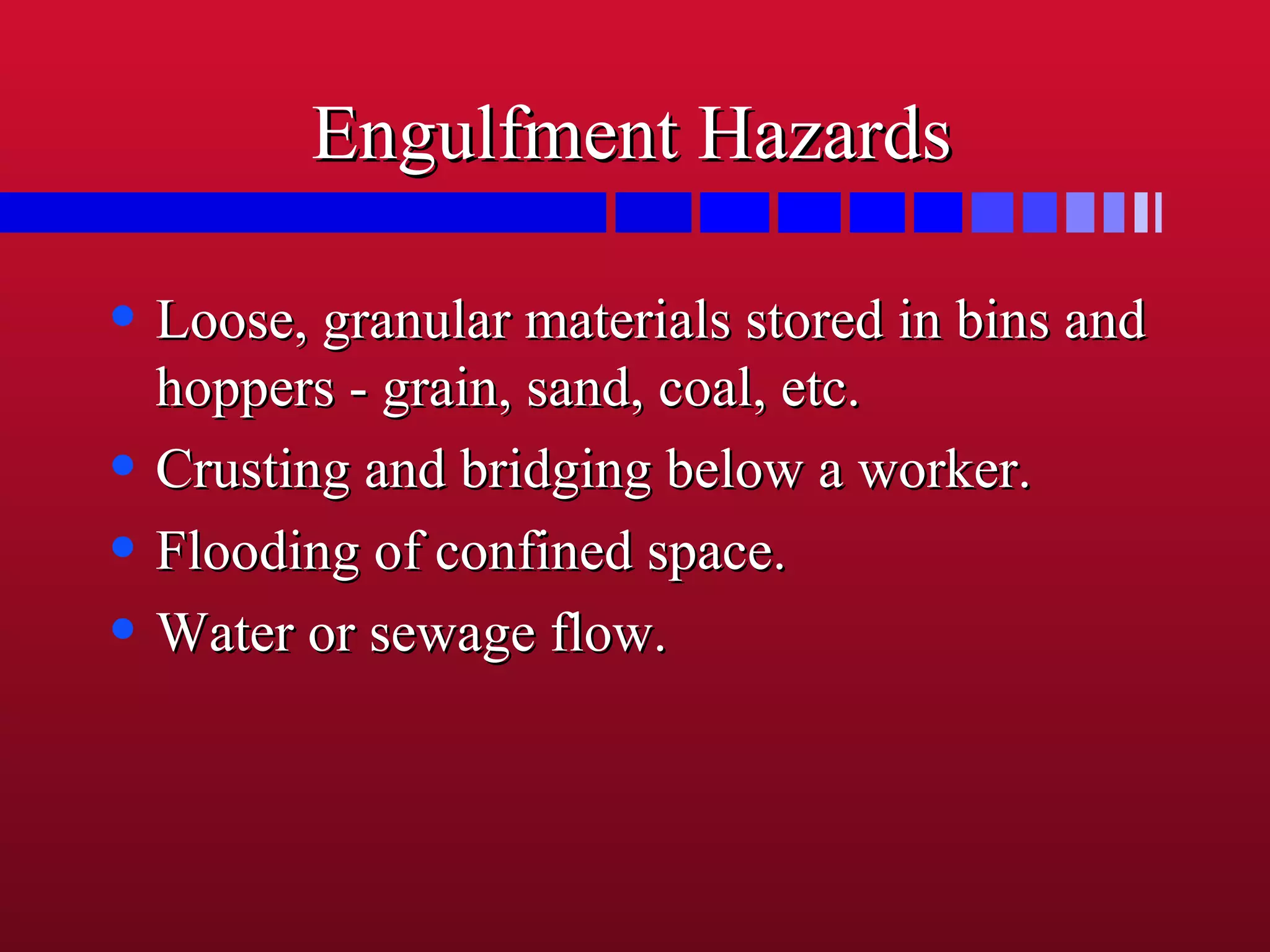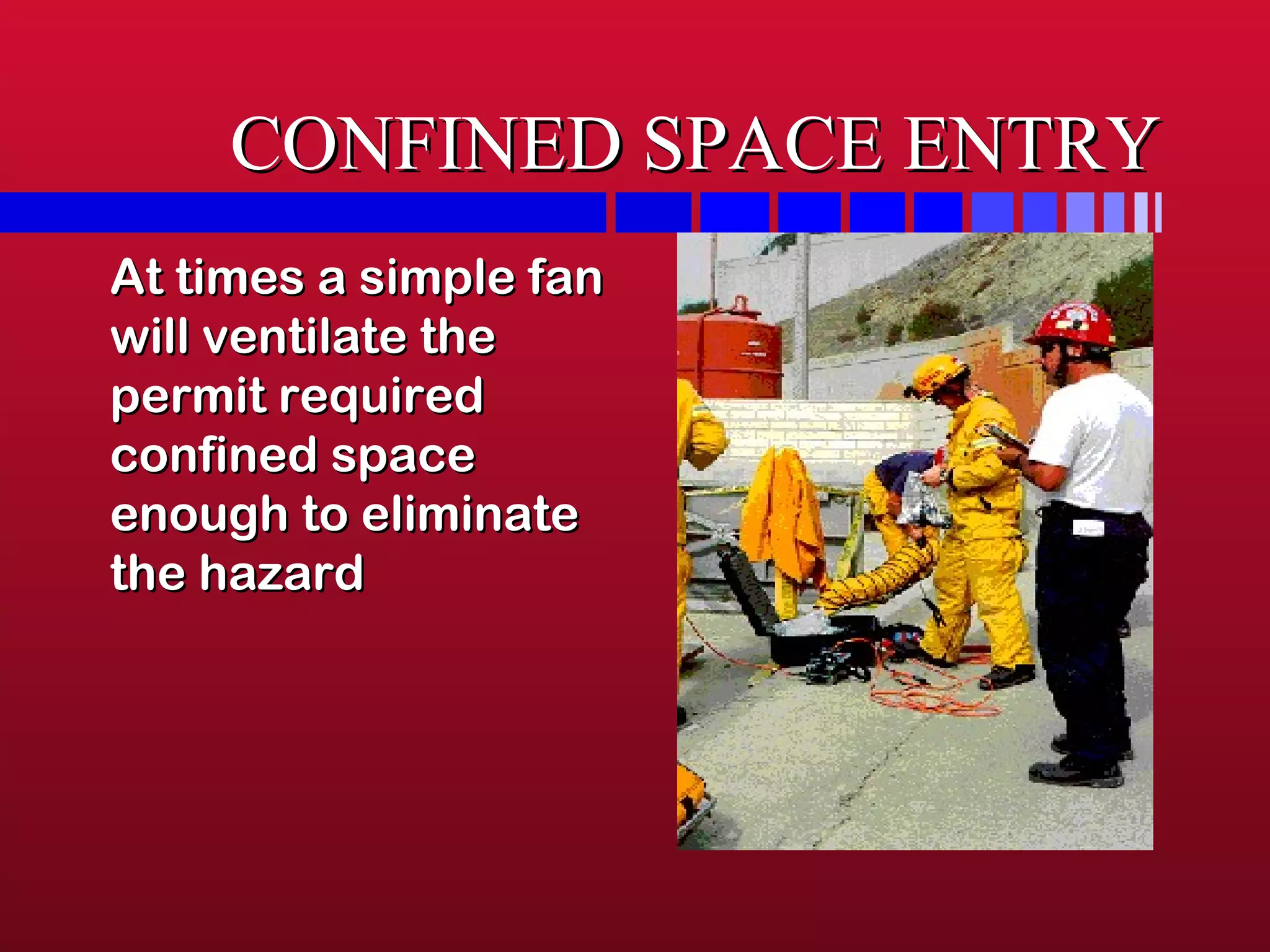The document outlines safety regulations and best practices for confined space entry in various industries, emphasizing the need for training and awareness of hazards. It details the characteristics of confined spaces, potential risks such as toxic atmospheres and engulfment, and necessary protections like ventilation and permit systems. Additionally, it addresses the responsibilities of employers and workers, including emergency preparedness and the use of personal protective equipment.







































